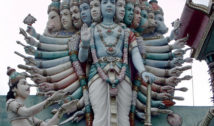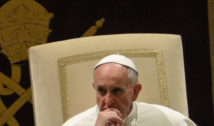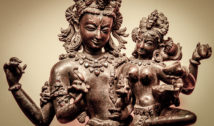Barbie and Ken as Mary and Jesus Offend Religious Leaders
- By Derek Welch --
- 03 Nov 2015 --

Art depicting religious figures using Barbie and Ken dolls upsets religious leaders, but believers are okay with it.
Argentinean artists Marianela Perelli and Pool Paolini’s depiction of Barbie and Ken as religious icons has religious leaders outraged. The artists have reimagined the dolls with Barbie as the Virgin Mary and Ken as Jesus Christ. The art show, dubbed “Plastic Religion” by the artists, has upset bishops and many religious figures of varying religions.
Barbie and Ken as Mary and Jesus Offend Religious Leaders[/tweetthis]
Last year’s planned exhibit of their art was was eventually banned after receiving threats. This year the show is going on as planned. “Barbie, The Plastic Religion” is on view at POPA art gallery in Buenos Aires, Argentina, until November 20.
“We never wanted to hurt the feelings of people of faith.” -Pool and Marianela
However, there are various individuals who have seen nothing offensive with the portrayal. According to them, the artists are basically trying to celebrate the diversity of religion in a creative manner.
Spencer Dew, Assistant Professor of Religious Studies and Centenary College Research Professor in the Humanities at Centenary College of Louisiana, approached the issue from a different perspective. His analysis provided an expound meaning of the word “plastic’ by using the artists’ native culture as the main contributor that triggered them to use plastic dolls to interpret religion.
He explained that the name “plastic religion” could create offense if it’s interpreted literally. The author says that the meaning of the word can vary. “When we speak of the ‘plastic,’ we are speaking of something with which we can engage in infinite and creative ways.” After deep analysis of the artists’ theme, the author was able to conclude that the artists Barbie and Ken had no intentions offending anyone whatsoever because they were just embracing the creativity of their native practices into the art show. This provided a better understanding of the use of plastic as a symbol making his argument to look more convincing.
Bethany Ramos, a Christian woman, also wrote a similar article defending the motive of the artists. According to her article on SheKnows, she does not think the Barbie and Ken religious depictions are offensive. She viewed the art show as a method that parents can adopt to shed more light to their children concerning their religion and other people’s beliefs. She was able to convince more people with her statements after she declared that she was also a Christian.
Her sentiments demonstrated that one can be religious and still avoid being offended by artistic creations. She said, “Art is controversial. All press is good press. Artists are allowed to use any medium and interpretation they would like to tackle difficult subjects, including religion and politics.”
She was trying to respond to a statement that was submitted in an Italian website. The article was highly supported by Italian bishops clearly showing the public how offensive the plastic dolls were. Similar articles were also published on other platforms such as Religion News Service, Huffington Post, and Opposing Views. All the articles contained a message that increased the religious community’s anger. They said, “The bishops’ website invites parents to explain to their children why a doll is not always a gift and to help to deconstruct ‘the fictitious role’ presented and the true stories behind the dolls.”
An artistic showcase featuring 33 Barbie and Ken dolls as religious figures — including a crucified Jesus Christ… https://t.co/MJNbI3kF7L
— Evangelist Klaus (@EvangelistKlaus) October 27, 2015
Another article written by Kathy Schiffer (also a Christian woman) on Patheos demonstrated that not all people who are religious find the Barbie dolls as being offensive. She said that “I am bemused, but not offended. I imagine Catholic children treasuring these figures and reenacting Bible stories in the playroom.”




















